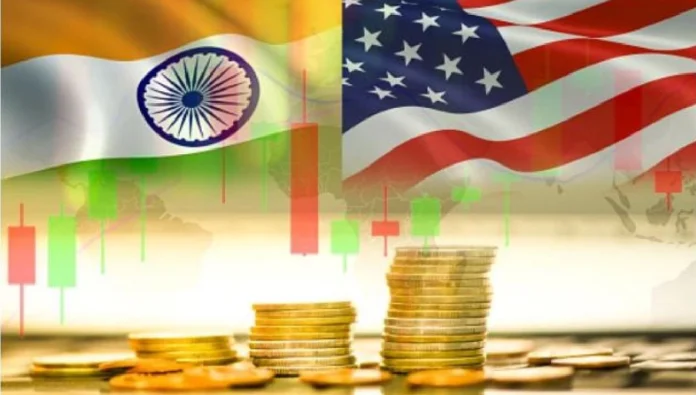By Annunthra Rangan
During his presidential campaign, Donald Trump famously declared that “tariff is the most beautiful word in the dictionary.” Six months into his presidency, he has moved decisively to turn that vision into policy, reshaping global trade in a way that has startled both political and business circles worldwide.
On April 2, Trump announced a “baseline tariff” of 10 percent on all goods imported into the United States, alongside higher “reciprocal tariffs” targeting around 60 trade partners accused of unfair practices. Then, on July 31, he escalated the strategy, signing an executive order that imposed even steeper duties—ranging from 10 percent to 41 percent—on nearly 70 countries, including measures to penalize goods rerouted through third countries to evade US tariffs. Citing emergency powers, Trump framed the move as a direct effort to reduce America’s trade deficits.
The new tariffs are set to take effect next week for most nations, leaving a narrow window for negotiations. Recent weeks have already seen some breakthroughs: on July 27, the US and European Union (EU) struck a deal reducing the EU’s baseline tariff to 15 percent on goods exported to America—covering key sectors such as automobiles, which had faced a 25 percent levy since January.
In exchange, the EU agreed to impose no duties on US exports, purchase $750 billion (€656 billion) worth of US energy, and invest roughly $600 billion in the American economy, according to the White House.
The deal, however, remains subject to approval by all 27 EU member states and has drawn sharp criticism. French Prime Minister François Bayrou labelled the agreement a capitulation, calling the day it was reached “a dark day” for Europe.
INDIA’S NEW TARIFF REALITY
From August 7, 2025, Indian exports to the United States are subject to a 25 percent levy—this includes the 10 percent baseline tariff—plus the applicable Most Favoured Nation (MFN) rates and any additional trade remedy measures.
For instance, Indian shrimp currently enjoys a zero MFN rate, but is already subject to a 2.49 percent anti-dumping duty and a 5.77 percent countervailing duty. These two duties, classified as trade remedy measures, mean that from August 7, shrimp exports face a 33.26 percent total tariff (25 percent + 2.49 percent + 5.77 percent). From August 27, when the general tariff rate on Indian goods rises to 50 percent, the same product will be charged a 58.26 percent duty in the US market.
Beyond the general tariffs, the US has introduced sector-specific duties:
- Steel and aluminium—50 percent.
- Copper—50 percent.
- Auto parts—25 percent.
These rates are over and above existing duties, where applicable.
According to the Global Trade Research Initiative (GTRI), the 50 percent tariffs do not apply to certain critical sectors, including pharmaceuticals, energy products, critical minerals, and electronics/semiconductors.
ECONOMIC JOLT
Bilateral trade stood at USD 131.8 billion, with USD 86.5 billion in Indian exports and USD 45.3 billion in imports from the US Trade bodies warn of severe consequences:
- Indian shrimp exporters fear losing US market share.
- The textile industry calls it a “huge setback”.
- Jewellery exporters predict heavy losses.
- GTRI estimates US-bound exports may fall by 40-50 percent.
- FIEO warns 55 percent of Indian exports could be hit.
Post-levy, India and Brazil face the highest tariff rate at 50 percent, while competitors such as Myanmar (40 percent), Thailand (36 percent), and Bangladesh (35 percent) enjoy lower rates—undercutting India’s price competitiveness.
FROM STRATEGIC PARTNER TO PUBLIC TARGET
While Modi and Trump exchange public praise, trade negotiations remain stalled over e-commerce, data flows, and medical device pricing. Meanwhile, Trump has escalated criticism of India’s Russian oil imports, linking them to a punitive trade stance.
Complicating matters further, Trump has deepened US-Pakistan ties, hosting its army chief and announcing a joint oil exploration venture. “Pakistan might sell oil to India someday,” he quipped—a pointed jab at New Delhi.
The Pakistan-US deal could bolster Islamabad’s economy and potentially increase fiscal space for defence spending. For now, India treats it as a bilateral matter, but credible oil finds could alter the regional balance.
PAKISTAN’S RESOURCE GAMBLE
Pakistan’s history of unfulfilled resource promises—Balochistan’s mineral wealth, the Sui gas grievances, failed gold mining projects—underscores the challenge. Even with US investment, Pakistan’s oil exploration remains speculative. Until discoveries are proven, political theatrics outweigh economic reality.
—The writer is a Senior Research Officer at Chennai Centre for China Studies. Her research interests constitute China-WANA (West Asia and North Africa) relations and human rights


